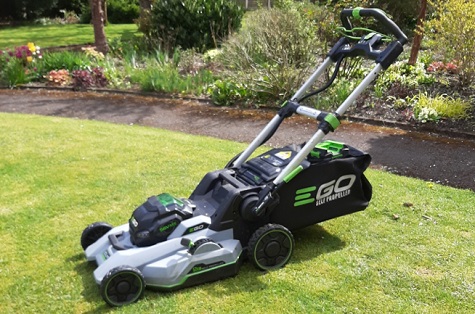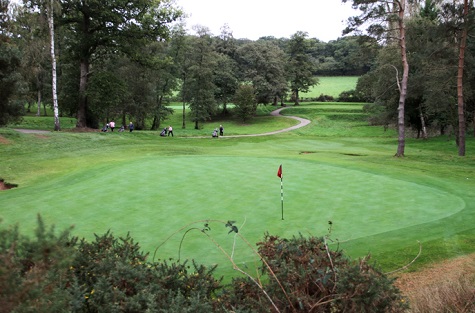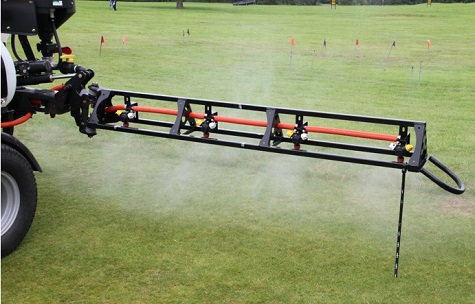WHAT SUSTAINABILITY MEANS TO PRACTIONERS
In three important sub sectors

In the first of this series of articles, we sought to get a clearer definition of what sustainability is and what it means to an organisation, especially in the amenity horticulture sector. Sustainability comprises three pillars or components namely economic viability, environmental protection and social equity. The definition of these is important when any organisation seeks to become more sustainable, or indeed seeks to deliver more sustainable products and services to its customers. The remaining articles on this subject have sought to look more closely at various sub sectors of, and activities in amenity, and those providing services to them, which hopefully will help all readers in their own search for sustainability
Previously we considered Sustainability In Practice, Sustainability At The Sharp End, Sustainability In Supply, Managing Weeds Sustainably, Innovation & Sustainability, Life Cycle Analysis and Sustainability, Implications for Training & Education, Taking A Global Look At Sustainability and Sustainability and the UK Action Plan.
This month as the series draws to a close I seek to summarise some discussions with influential people in the sports and amenity sector on what sustainable practice means to them and to their organisations.
Production of this series of articles has involved very interesting discussions with people from across the sector. This penultimate article in the series highlights key points from just a few of these conversations, providing a view point from three important sub sectors. However the points raised have relevance to all sub sectors and certainly link to content covered in throughout this series of articles.
Professional Lawn Care
The first set of discussions is drawn from the professional lawn care sector. There are some 15 million lawns in Great Britain and the public spend is at least £54 million on lawn fertilisers alone in a year. Professional lawn care activity is substantial and continues to grow. They provide fertiliser and weed care as core activity but with other add on services. The last survey of professional lawn care organisations, carried out by the Amenity Forum in 2020, estimated some 10000 hectares of professionally managed lawns.

So how is this sector seeking to adapt to the sustainability and net zero agendas? Here are some steps being taken by the organisations spoken to:
- Moving to the use of electric vehicles: Staff engaged in professional lawn care need to travel from house to house and so a vehicle is essential. Electric power makes sense although there are difficulties, including charging capacity and domestic access to charging, and, where larger vehicles are needed for bigger lawns, the extra weight can be an issue. However technology continues to develop and the trend to electric, and indeed hydrogen in future, will continue, linked to government targets.
- Adding services to the offer to customers; of course partly driven by profitability motives but also sustainability. Such services include water conservers and soil improvers as well as advice to customers on sustainable issues. .
- Other sustainable action includes re-cycling and seeking to move away from plastic and using slow release fertilisers and organic products where possible, as developments in the fertiliser industry continue.
- Using tracking software produces reports for drivers seeking to create safer approaches and more sustainable practice
- The launch of a new authorised pesticide to combat the damage caused through leatherjackets and chafers is welcomed and will be used but it will be linked with advice to customers on cultural ways of reducing incidence of the pests, such as less thatch. The use of nematodes is complex given the small scale of most lawns.
- Commitment to best practice with all those talked to being members of the UK Amenity Standard.
Sport
The second set of comments comes from sport which is very important to the lives of the UK public. The discussion here was with a head groundsman from football but the principles can be applied to other areas. A key focus for the discussion was how can football, through the management of its pitches and stadium, contribute to the sustainable agenda and help meet targets to reduce carbon emissions. The following key points emerged.
- Seeking to, as much as possible, recycle waste products and divert waste disposal away from landfill
- Reducing single use plastics
- Continuing to investigate alternative forms of transport and power equipment, seeking to reduce environmental impact
- Examining opportunities to improve biodiversity, including potential for the creation of a living wall and roof garden within the facilities
- Water harvesting from rooves and re-cycling water
- Change to LED bulbs for grow lights which are essential to promote grass growth in shaded stadium areas.
Golf

This second discussion was supplemented with one from golf and looking, in particular, at what taking an integrated approach meant to them in terms of weed, pest and disease management. Some key points were:
- If starting to build, a free draining root-zone is the beginning for all golf and winter sports turf surfaces. Grass species and cultivars can be chosen and the maintenance programme planned to encourage their growth without pest, weed or disease. Organic matter control is probably the number one cultural control that helps all elements of golf green and sports pitch management.
- As water is required for grass growth, but also for germination and infection by many of the important turf grass pathogens, water management is of great importance. Two maintenance practices are considered; applying irrigation when grass plants require water and keeping the grass surface as dry as possible.
- The period of leaf wetness is also key. Leaf surfaces remaining wet all night encourage pathogens to germinate and potentially infect the grass plants. Dew is also removed by switching, brushing or using dew removal products to reduce the time that the surface stays wet.
- Establishing or over sowing with desirable grass species especially in combination with organic matter control, helps to ensure ‘fine’ turf surfaces optimal for smooth and true golf greens.
- Consideration of the release pattern of fertilisers can help to prevent peaks and troughs in fertility. Slow release and controlled release fertilisers can ‘drip feed’ the grass, creating more even growth patterns with less stress to the plants, and so reducing susceptibility to low fertility diseases.
- Using iron sulphate, especially over the autumn and winter period, has helped to reduce diseases such as microdochium patch. This also helps darken the green colour of the grass and put any moss that has crept in at a disadvantage.
The key message emerging from this particular discussion is to plan in an integrated manner and, in doing so, deliver on the agenda of sustainable practice.
Research
The third of the discussions was with a turf research organisation. Some key points were:

- Over recent years the focus is sustainability, based upon the premise of doing better with less or seeking to achieve similar results but in a more sustainable manner. This can translate itself in many ways. One example is seeking to achieve desired outcomes with less inputs by use of bio stimulants, improved plant health and achieving greater nutrient efficiency.
- In essence, when it comes to managing amenity and turf spaces sustainably, it involves taking a more holistic integrated approach, based upon informed and positive husbandry, and making use of all the tools available, so outcomes are not compromised but more sustainably achieved.
- Important research is on-going investigating the genetics of plants, implementing techniques such as genome editing, reducing susceptibility to disease or to enhance healthy growth, and, as mentioned, utilising bio-stimulants. These seek to influence internal processes allowing the plant to do better and become more attuned to combat pathogens and extreme growing conditions. This work seeks to re-think traditional practices and identify new approaches.
- A key factor in this is adapting to climate change and seeking to enable plants to deal with the increased stress caused to them. One important area is water with, in our modern climate, increasing times of drought and abundance. Research and trials work involves exploring further techniques in the use of surfactants, water storage and sub surface irrigation.
- In turf, the initiative launched by the Royal and Ancient a few years ago, is proving a very important driver, not just in stimulating and resourcing research and trials, but, perhaps most significantly, creating a pro-active discussion by all involved. For example, those directly engaged in turf management are at the sharp end and very much in a push pull situation. They recognise the need for more sustainable practices yet continue to have demand from users for high quality surfaces fit for purpose. Everyone wants to be more sustainable; it is just how it best can be achieved. Research is being geared to help us with this.
- Policy changes also drive innovation. New regulations concerning fertilising products are driving significant changes in supply to the sector. The new regulations are more far reaching than previous, aiming to increase the number of products available, especially from sustainable sources or utilising organic alternatives. All products must comply with regulations aiming to protect the environment and, in particular, maintaining soil quality.
- This has prompted much investment in the supply sector, both in re-assessing current products and in diversification. It has stimulated significant growth in controlled slow release coated fertilisers with their increased biodegradability. The aim is to enable amenity and turf professionals to improve nutrient use efficiency, a further step in providing improved sustainable practice. Equally important is the search to create a more green approach to processes involved in fertiliser manufacture and supply.
An opportunity
Emerging from these discussions that I have highlighted here and others, indicate a real willingness by the amenity sector to engage in sustainable practice. It is seen as less of a challenge but more an opportunity. The key is determining how best not just to implement sustainable practice but also demonstrating this. In reality much is already being done and it is important that we say this loud and proud. Too often the amenity sector can be criticised, yet so much is being done. Everybody involved needs to say that.
"You have to think a little smarter, be proactive not reactive" - Frank Abagnale
The final article in this series will seek to bring together key points made over the series and in particular establish some key guidelines for implementing sustainable practice.




